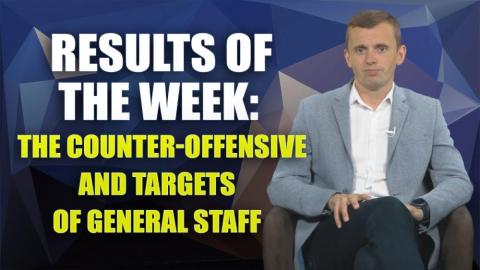Авторы публикации
• Partial mobilization in the Russian Federation (and the adoption of new mobilization legislation), as well as a sharp acceleration in the pace of the so-called. "referendums" in the occupied territories are markers of an attempt to transform the Russian strategy in the Russian-Ukrainian war, and, probably, its transition to a New phase.
• This transformation attempt was forced for the leadership of the Russian Federation and is a consequence of the defeat in the Kharkiv region and the general loss of military initiative, the ever-increasing military and financial assistance to Ukraine from the United States and allies, which provokes the processes of demoralization and destruction in general in the Russian state.
• These decisions were made under pressure from the patriotic-passionate part of Russian society, and their task is not so much to defeat the war (this is impossible in the near future), but to stabilize the internal political situation by partially satisfying the request of the radical-minority part of society, and restoring the “confidence” of the infantile-majoritarian part through a sense of "control and expansion of the Empire". Although the task of changing the course of the war is also certainly worth it.
• Mobilization and “referendums” are already officially turning the “SVO” wanderer (at least removing the letter “C” from there, and making the “o” small). The Kremlin was forced to accept the failure of the main goals of "its" due to insufficient forces and transforms the invasion into a frontal war.
But not only the letters from the name disappeared. The Russian Federation is also changing the goals of the war. Now this is not forcing Ukraine to capitulate (although it would not have been refused either), but the liquidation of Ukraine and its absorption in parts into the New Russian Empire, which Russian politicians, the same L. Slutsky, directly speak about today.
• For Ukraine, this also further devalues the Russian Federation as a participant in negotiations, extremely narrows the field of topics available for dialogue.
There will be no political negotiations in the coming months.
• The new phase of the Russian-Ukrainian war will be characterized by the involvement of even more forces and means, the number and composition of the warring parties, the further scaling of the crisis, and the growing risks of using nuclear weapons. Today, in one way or another, more than 70 countries are involved in the war in Ukraine - with the supply of weapons, political participation and financial assistance (only the group of countries in the Ramstein format + and allies of Ukraine has about 60 countries, up to 10 more can be considered conditional allies of the Russian Federation) .
• By announcing mobilization, the Russian leadership apparently hopes to turn the tide in the Ukrainian-Russian war to their advantage already during the winter-spring of 2022-2023.
RF relies on several factors at once:
- Energy crisis in Europe.
- High prices, peak inflation in winter in Europe and North America.
- Growing political instability in the EU and the US.
At the same time, during the winter, the Russian Federation hopes to launch a new offensive.
• The Russian Federation will actively engage in "nuclear blackmail", but the very threat of using tactical nuclear weapons has seriously increased in any case.
• The Russian Federation, through the mechanisms of "nuclear blackmail", is trying, first of all, to put pressure on Ukraine's Western allies in order to reduce their level of support for Ukraine.
But the declaration of readiness to use nuclear weapons should not be taken as blackmail only. This is blackmail to a certain extent (as long as they believe or pretend to believe), and then it's just a weapon that can be used.
The Russian Federation today is considering the possibility and expediency of using tactical nuclear weapons in the south and east of Ukraine, at least to protect the new annexed territories.
• The RF will face significant difficulties in mobilizing, but in general it is likely to be implemented. The mobilized units will potentially go to the front, 1-4 months after the start of mobilization. If the Russian Federation manages to mobilize the declared 300 thousand people, this may be enough to stabilize the front line in the south and east of Ukraine, as well as to create a new strike force that can be used for a new offensive against the city of Kyiv or for an attack on the city of Nikolaev and the city of Odessa.
• It must be understood that PARTIAL mobilization is more of a thesis for the Russian internal audience, an attempt to reduce the level of fear and anxiety that will certainly arise in connection with the mobilization now. Since any mobilization is in fact partial, it has never reached 100%. And the declared figure of 300,000 people (out of 25 million mob potential) is an attempt to show that they will not take everyone without exception in order to reduce the level of tension and nervousness in Russian society. The lack of deadlines for mobilization is noteworthy - it can last for years and be used to call up millions of people.
• V. Putin and his entourage through "referendums" will also try to get at least a shadow of the Crimean consensus, to increase the level of support from society for unification around power; provide guarantees of their non-persecution in the future by the new authorities in the Russian Federation (without abandoning the results of the “referendums”, it will not be possible to condemn their reasons (invasion of Ukraine) and participants.
• Of course, mobilization will raise the level of internal tension in the Russian Federation and increase anti-war displeasure. The war will penetrate deeper into the fabric of Russian society, upset its infantile balance with the authorities - more involvement and demands.
Will it turn into protests? So far it's incredible. Legs in the context of 2-3 years - very.
It will also have a negative impact on the Russian economy. But the consequences of these losses will most likely not be felt for society until next spring.
• For Ukraine, mobilization in the Russian Federation carries both military and socio-economic risks.
Since the Russian mobilization in Ukraine will have to respond with a new round of our mobilization to build a more layered defense, and follow the path of expanding the number of Ukrainian armed forces.
A new round of mobilization will increase government spending and have a negative impact on the national economy.
• Mobilization and "referenda" are unlikely to be a turning point in the war, but one of its turning points for sure.
Ruslan Bortnik


